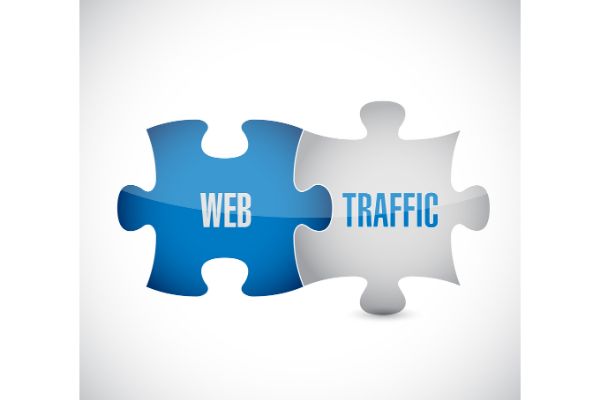Disclaimer: This post may contain affiliate links, meaning we get a small commission if you make a purchase through our links, at no cost to you. For more information, please visit our Disclaimer Page.
The internet is a basic part of most modern homes and offices today. Business is done on a global scale, sometimes even if a particular company doesn’t have any interests outside of its own country. It may still need data from across the world to provide the best in goods and services for its customers.
On a related note, it would be exceptional for most people to go to a home without any internet service at all. Even many wooded or rural areas are afforded some kind of connection to the internet. With so much reach to the online world, one might wonder how all of this service is divided between companies that provide it. Your internet service provider uses different kinds of lines or cables to bring the signal into your home.
Some customers might wonder whether local or national internet providers share the data streams from these lines with each other. We will figure out the details on this topic in our article today, and we can dive into some of the differences that might exist between how these agreements could work.
Furthermore, we’ll talk about related things like cable service, including whether you would be able to have deals with more than one cable company for different kinds of service in the same home. Finally, we’ll discuss what internet peering is, why it is a thing, and some of the benefits or disadvantages to the practice of peering.
Table of Contents
Do Internet Providers Share Lines?
Some internet providers can share lines or connections with each other for a few purposes. However, it is not a given that different companies in your area do share lines.
In fact, it is much more common for two competing companies to have their own lines that direct their own traffic and take care of their own customers.
There could be a few reasons for this, but one major thing that decides this issue is the investment in building the infrastructure to bring the internet and other services to a potential customer base.
In most cases, the provider that is in the area first will have its own lines. It may have this access based on a purchase that it made, or it may have invested time and money in laying those lines as a company.
For these reasons, other companies won’t necessarily have access to the same lines that are already there. Some of this logic applies to cable companies that provide other services, and we will get deeper into that in a later section. There are also occasions in which the first or largest company may choose to share its lines, but these are specific circumstances with different motivations.
With that said, a larger or initial internet service provider in your area may lease or rent lines to smaller providers, much like how a big company can cut up and lease physical real estate to smaller businesses.
If you have access to internet service from a small company that is only known in your city, it is entirely possible that this business has asked to rent part of the infrastructure from the larger company that set it up in the first place.
In these cases, the two providers do share lines. The larger company gets part of the profits from the smaller one, and the latter can do business without the initial large costs of creating infrastructure.
Can You Have Two Different Cable Companies in the Same House?
Although some people have the option of choosing two different companies to run services to the same residence, whether this is possible for you depends on the cable configuration you’re working with and how the companies in your area operate.
This also assumes that we’re discussing only true cable providers. With the different ways you can get streaming services, for example, you have access to several providers of different content or “channels” that you access thanks to a single internet connection from one company.
This connection sends a signal that is routed through your hardware to your home, and you can then receive it on all the devices in that home.
Depending on where you live, some complexes that house multiple residents might be wired up by particular companies. A certain business will have a dedicated space in the building for everything it needs in order to bring that cable service to each resident.
If another company wanted to offer similar services, they would also need their own space within the building, and this may not be feasible. Additionally, many cities have deals with only one of the major cable companies out there, and you may be restricted to using this cable service within your home.
If you do have more than one option available here, you might be able to go with the same company, but it depends on how things in your home are wired.
The additional company would also need to be able to run its own lines to you, and there may not be a way for your house to have both at once.
If we expand the discussion to internet providers, however, your options may grow along with it. It is worth remembering that you may only have access to one ISP in your area, just like you might with a traditional cable company.
However, you would have to find a company that uses different cables from the first provider. If you don’t, it isn’t as feasible to have a different provider, and the benefits of the second one will be minimized thanks to the same hardware being in use for both.
Much of this has to do with what we mentioned before about some smaller companies renting from the larger ones.
The simplest way to get two connections would be to make one a cable one and the other a DSL one.
This is not always possible, particularly in small areas that may not have a need for more than one provider for all the residents. If you live in an apartment complex, your rental agreement may also place stipulations on two different connections.
However, if it is available, the option of two connections in one house might benefit two roommates who favor different companies or packages.
If you do go this route, it is best to try to divide the connections within the house by floors or other means. Doing this can cut down on interference problems, but it is not always possible.
What Is Internet Peering?
We spoke a bit about how some smaller internet companies will pay larger ones to rent space and infrastructure in order to run their businesses. Peering is another type of sharing that goes on, but it is a different sort of agreement.
When peering happens, two different networks agree to link up and exchange certain user traffic between them. Unlike a rental situation, it is typical for neither party to pay the other when peering is happening.
Peering allows the sharing of certain connections within the infrastructure, and much of what goes on behind the scenes relates to the management and speeds of individual connections.
What Are the Benefits & Disadvantages of Peering?
With the internet becoming more ubiquitous in homes and offices today, the infrastructure needs to be able to handle an increasing amount of traffic.
Although the actual number of active users across the globe can vary from one day to the next, it is not an exaggeration to say that several billion people around the world have and use some type of internet connection.
Each person needs fast, reliable access to the web, and peering is one of the ways that all of this traffic is managed.
Possible Benefits of Internet Peering
- A faster exchange of data and throughput between the two parties, which results in faster transfers for users.
- Typically, it is not necessary to lay additional cables or build new infrastructure, particularly with public peering. Public peering uses a shared switch connection between the two parties. Private peering uses a point-to-point link.
- Better redundancy by relying on fewer transit points.
- Improved performance by getting through bottlenecks to find a more direct route for the data exchange.
Possible Disadvantages of Internet Peering
- Not much in the way of visibility into traffic and network links.
- This lack of visibility can cause issues that might lead to packet loss in some cases.
- Current peering doesn’t necessarily account for all modern security threats out there.
- The protocols used for peering may not adapt quickly enough to real-time situations to prevent performance issues.
Both the advantages and disadvantages here scratch the surface of peering, but there is no question that peering is necessary in today’s internet world.
Having multiple systems and networks connected increases the reachability of the internet, and that’s a good thing for a growing crowd of users getting online.
Conclusion
Many internet companies do not share lines, and some people in certain areas may only have one provider to choose from for this kind of service.
Others may be fortunate enough to have at least one other local provider, although this company might be renting infrastructure from whatever larger one got there first.
In this situation, it may even be possible to use two providers for different things in one home, too. Internet peering connects different networks together as a way to handle traffic, increase the reach of the internet, and try to improve performance.


